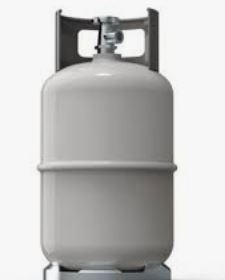Introduction:
When we talk about the marvels of modern engineering, we often overlook the individual components that make complex machinery function efficiently. One such critical component is the cylinder body. Whether in automotive engines, hydraulic systems, or industrial machinery, Moreover, the cylinder body plays a pivotal role. This comprehensive guide aims to shed light on the importance, functionality, and applications of the cylinder body in various engineering fields.
What is a Cylinder Body?
The cylinder body, also known as a cylinder block in automotive contexts, is the core structure of an engine or hydraulic system.
Mechanical Energy
It houses the cylinders in which pistons move to create mechanical energy from combustion in internal combustion engines or to transfer hydraulic fluid in hydraulic systems. The cylinder body is designed to withstand high pressures and temperatures, making it one of the most robust components in machinery.
Key Functions of a Cylinder Body
- Structural Support:
- The cylinder body provides the necessary structural support to the entire engine or hydraulic system. Additionally, it holds the cylinders, pistons, and other related components in place, ensuring they work in perfect harmony.
- Heat Dissipation:
- Engines generate a significant amount of heat during operation. The cylinder body, usually made from cast iron or aluminum, helps dissipate this heat, maintaining optimal operating temperatures and preventing overheating.
- Fluid Containment:
- In hydraulic systems, the cylinder body contains hydraulic fluid, ensuring it is channeled correctly to move the pistons and generate mechanical force. This containment is crucial for the efficient operation of the system.
- Alignment and Precision:
- The cylinder body ensures the precise alignment of the pistons and cylinders. In addition this precision is critical for maintaining the efficiency and performance of the engine or hydraulic system.
Materials Used in Cylinder Bodies
The choice of material for a cylinder body depends on its application and the specific requirements of the machinery. Common materials include:
- Cast Iron:
- Known for its durability and excellent wear resistance, cast iron is often used in heavy-duty applications, such as automotive engines and industrial machinery.
- Aluminum:
- Lightweight and possessing excellent heat dissipation properties, additionally, aluminum is commonly used in high-performance and lightweight applications, including sports car engines and aerospace components.
- Steel:
- For applications requiring extreme strength and durability, steel is an ideal choice. It is used in high-stress environments such as hydraulic systems and heavy machinery.
Applications of Cylinder Bodies
- Automotive Engines:
- In internal combustion engines, the cylinder body (or engine block) houses the cylinders where fuel combustion occurs. It is a critical component in ensuring the engine operates smoothly and efficiently.
- Hydraulic Systems:
- Cylinder bodies in hydraulic systems contain the fluid that powers the pistons, enabling the machinery to perform various tasks such as lifting, pushing, and pulling.
- Industrial Machinery:
- Many industrial machines rely on cylinder bodies to house the pistons and cylinders that generate mechanical motion. These include presses, injection molding machines, and compressors.
- Aerospace:
- In the aerospace industry, lightweight and durable cylinder bodies are essential for high-performance engines and hydraulic systems used in aircraft and spacecraft.
Innovations in Cylinder Body Design
Advancements in materials science and manufacturing technologies have led to significant innovations in cylinder body design. These include:
- Lightweight Alloys:
- The development of advanced lightweight alloys has made it possible to create cylinder bodies that are both strong and lightweight, improving the efficiency and performance of engines and machinery.
- Additive Manufacturing:
- Also known as 3D printing, additive manufacturing allows for the creation of complex cylinder body designs that were previously impossible with traditional manufacturing methods. This technology enables the production of highly customized and optimized components.
- Surface Coatings:
- Innovative surface coatings and treatments enhance the wear resistance and thermal conductivity of cylinder bodies, extending their lifespan and improving performance.
Maintenance and Longevity of Cylinder Bodies
Ensuring the longevity and optimal performance of cylinder bodies requires regular maintenance. Regular inspections can identify wear and tear, allowing for timely repairs or replacements.
Overheating Protection
Cleaning the cylinder body to remove debris and residue can prevent overheating and ensure smooth operation. Using high-quality lubricants reduces friction and minimizes wear on moving parts.
Common Issues and Troubleshooting
Despite their robust construction, cylinder bodies can encounter various issues over time. Common problems include cracks, warping, and wear due to high pressure and temperature.
Indispensable Component
The cylinder body is an indispensable component in modern engineering, integral to the functionality of engines, hydraulic systems, and various types of machinery. Understanding its role, materials, and applications helps appreciate the intricate engineering that powers our world.
Conclusion
As technology continues to advance, the design and materials of cylinder bodies will evolve, leading to even more efficient and powerful machinery. Whether in your car, an industrial machine, or an aircraft, the cylinder body remains at the heart of mechanical innovation.

